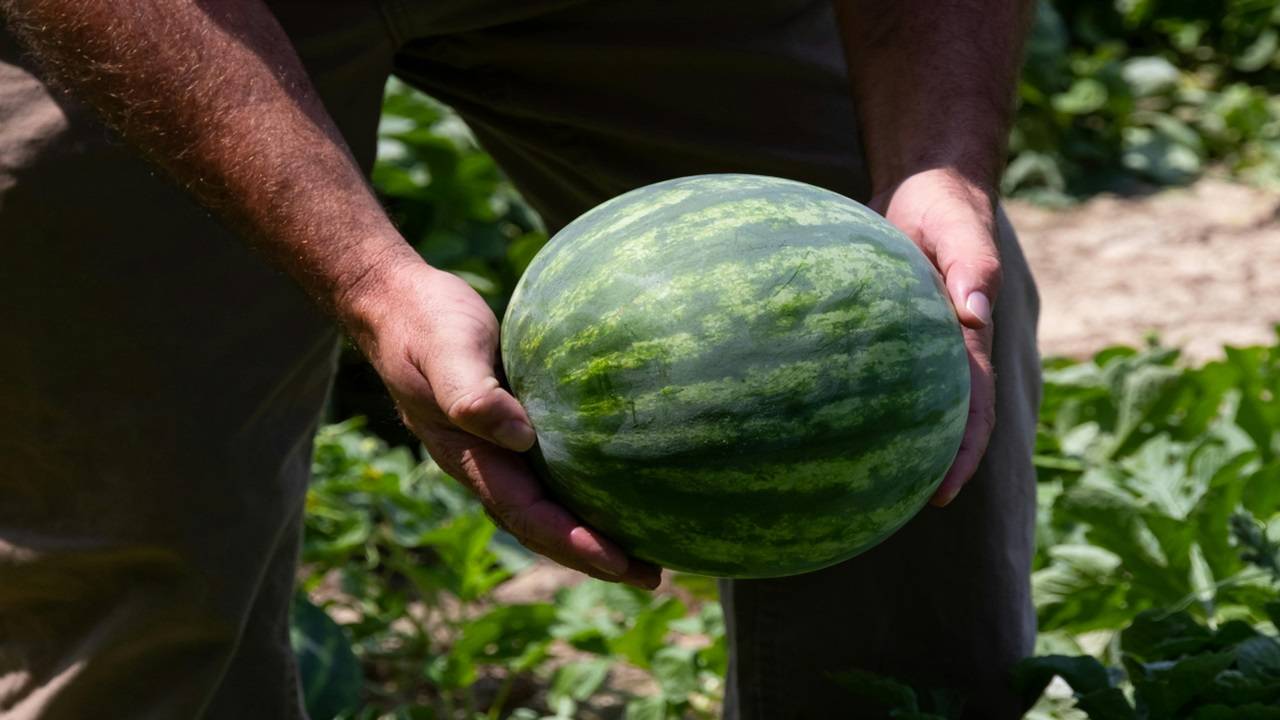
In a recent viral video, agricultural influencer Alen Joseph offers a detailed blueprint of the profit potential of watermelon farming. Renowned for his motivational approach to agriculture, Joseph's latest video is yet another example for aspiring farmers seeking lucrative opportunities in watermelon cultivation.
Watermelon, a refreshing summer staple from tropical Africa, is a promising venture for farmers across the Indian agricultural landscape. From Uttar Pradesh being the largest producer to Andhra Pradesh, West Bengal, Odisha, and more, watermelon cultivation is a potential avenue for economic prosperity for farmers.
Joseph's video is more than entertainment as it deep dives into the intricacies of watermelon farming. From soil preparation to pest management and everything in between, Here is a step-by-step guide to watermelon cultivation.
Step 1: Soil Preparation
A well-drained, fertile soil with a pH level between 6.0 and 7.0 is important for robust crop development, while judicious use of compost or manure ensures optimal nutrient availability.
Step 2: Nursery Preparation
Seedlings, the lifeblood of any successful crop, should be nurtured with care and prepared in nurseries.
Step 3: Planting
The watermelon seedling then finds their new home on the fields. Whether sown directly into the soil or carefully tended to in indoor pots, each seedling should be planted 1-2 inches deep, 3-4 feet apart and 1.5 feet wide for optimum growth.
Step 4: Fertilization
A balanced fertilization resonates deeply with aspiring farmers, as they learn to nourish their crops with the essential nutrients they crave. Applications of nitrogen, phosphorus, and potassium-rich fertilizers every two weeks is good for watermelon cultivation. A good fertilizer for watermelons is 10-20-10.
Step 5: Watering
Through careful irrigation practices, farmers must ensure that their crops receive the hydration they need, particularly during critical flowering and fruiting stages. The soil should be kept moist, but not soggy.
Step 6: Plant Growth Regulators
By manipulating hormonal pathways, farmers can further tip the scales in their favor, reaping bountiful rewards come harvest time.
Step 7: Pest and Disease Management
The specter of pests and diseases looms large over every farmer's field, threatening to derail even the best-laid plans. Farmers should equip themselves with the necessary tools to combat common adversaries, safeguarding their precious watermelon crops from harm's way.
Step 8: Harvesting
After 60-75 days of tender care and nurturing, the moment of reckoning arrives as ripe watermelons await their fate. With practiced hands and discerning eyes, farmers assess the readiness of their bounty, guided by the telltale signs of ripeness - a firm rind, a luscious hue, and the echo of a hollow thud.
Joseph's video further delves into the financial aspects of watermelon farming, providing a breakdown of investment and potential returns. Firstly, the seedlings are priced at approximately Rs. 2.5 each, with the farm spanning 3.5 acres requiring 20,000 plants, totaling Rs. 50,000 in seedling costs.
Following that, the expenses include Rs. 40,000 for mulching and Rs. 70,000 for drip irrigation. The expenditure on fertilizers and pesticides amounts to Rs. 1,30,000, while labor charges from plantation to harvest tally up to Rs. 60,000. This culminates in a total investment of Rs. 3,50,000.
The video goes on to detail that within 60-75 days, the total output of fruits reaches 90 tonnes. At the current market rate of Rs. 12 per kg for the Melody watermelon variety, the total turnover amounts to Rs. 10,80,000. Deducting the initial investment of Rs. 3,50,000, the net profit stands at Rs. 7,30,000.
Highlighting market dynamics, Joseph emphasizes the importance of market prices in determining profitability. He notes that as long as market prices remain above or at Rs. 5 per kg, farmers stand to achieve significant returns from their watermelon harvest.
















